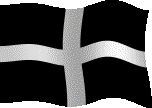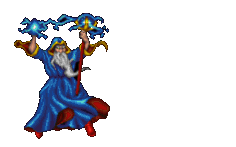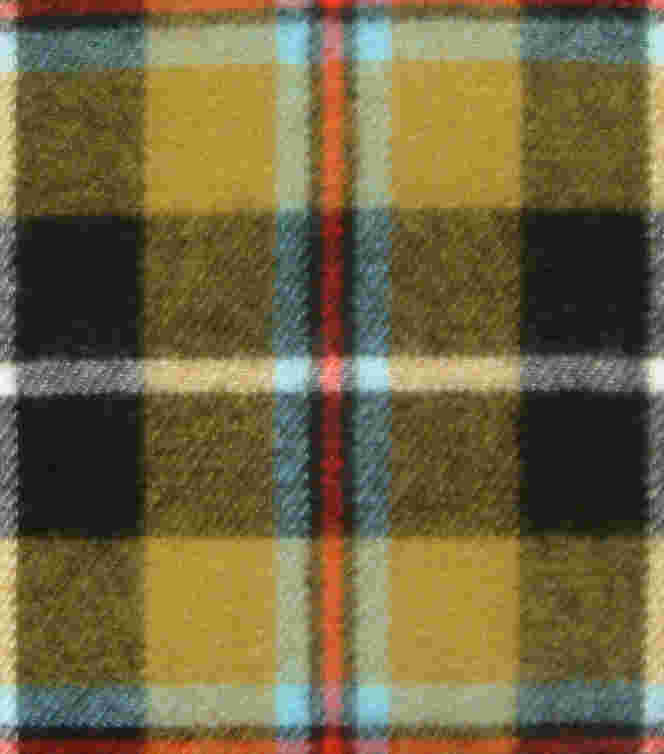Cornwall
Welcome, Cousin Jack, or Cousin Jen

For those who are curious - this is the flag of St. Piran,
the patron saint
of tinners and of Cornwall. The white cross represents molten tin oozing out of a black rock
used by Piran (born c. 480 AD) in the building of his fireplace. As the flames got hotter,
the tin smelted out of the rock. This led to a resurgence of the tin industry.

Webmaster is Cornish, from the "Hundred" of Penwith, west of Hayle and Copperhouse, the land of standing stones, old circles, quoits, tin mines, pasties (when in season), shady valleys, hidden woods, drizzle, misty moors, gorse, granite tors, hot suns, Arthur, Excalibur, Camelot and the Tintagel tapestry.
Webmaster never travelled much east of Camborne, that is, "up-'underd" until he was 18!
Actually, he did run in the all-Cornwall cross-country trials when he was 15 ....... at Par!
That was well up-'underd, in fact a long way up towards England, you know.
The main reason for not travelling abroad, into the next parish, let alone the next Hundred (Kerrier), was that Father was a farmer and life wasn't easy, tending the land as we did. My main job was tending the orchard where we had the pasty trees. These were hidden in among the quince and the crab apple trees, where the Visitors wouldn't ever get to see them.
There seemed to be a lot of mystery about all this, although why, I never could tell. I took a Visitor in to see them once, as a special treat, but he said he couldn't see them at all!
Damn funny, thought I, where the h*## do 'e think the pasties d'all come from, then?
Tending the pasty trees was an everyday job, even in the winter time, when the pasty buds were dormant. The busy time, apart from the picking season, in spring and summer, was the pollination of the new pasty flowers in the very late summer, after the Visitors were gone.
This had to be done early in the misty early morning, by hand, with a rabbit's-fur brush, because the pollen is so very light, you see, that the slightest breeze will take it away from the female pasty flower and you d'get a very poor crop if 'e idn't dunn right.
And everybody d'know that you d'need a good lot of flower to get a good pasty.....................
Of course, what I'm telling 'ee above is all about the cultivated pasty trees, what a lot people much prefer is the the rare and much sought-after gourmet cliff-top wild pasty. These are plantation escapes whose seeds have been spread by low flying shiteawks. The harsh cliff-top conditions mean that the crust has to be cracked with a mallet, but, oh, the concentrated flavours within .......
If you want to see a proper Pasty link - CLICK HERE
To see a Pretenders' Pasty link - CLICK HERE - this is the story of the Devon pasty - that's the one with its crust sticking upwards! That web page says to ignore what is told about "hen" and "cock" pasties but there is truth in it, depending on whether its made by a left-handed woman or a right-handed woman. This determines the direction of the roll in the crust when the join is being second-crimped. Most pasties are made by right-handed women and these are the "hen" pasties. When a left-handed woman makes a pasty then its the rarer "cock" pasty. Again, there is no mystery, its as simple as that . .....
Of course, a hen pasty is more comfortable in the left hand of a right-handed person if you have dirty hands and want to use the crust to hold it by because of its natural curl and the grip of your finger-tips. A left-handed man is better off with a cock pasty for the same reason and should really try to find a left-handed woman to make his pasties.
Also, it is not correct in saying the side or top crust doesn't matter - it makes all the difference! If your hands are dirty down in the tin mine or out in the fields then the crust is the "handle" you hold it by - the Devon top crust simply doesn't work so well. As it is, you do find top-crust pasties in the east of Cornwall due to the influence of neighbouring Devon .....

Some other things that I didn't really ought to tell you about Cornwall ..................... we normally try to keep it all a secret, you see, so don't you go telling nobody else, mind.
Corwall is the .....................





 Excalibur
Excalibur